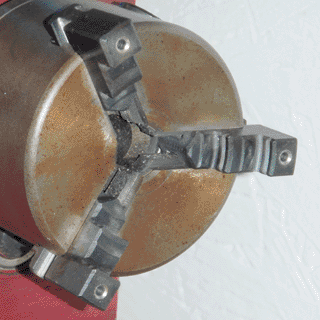

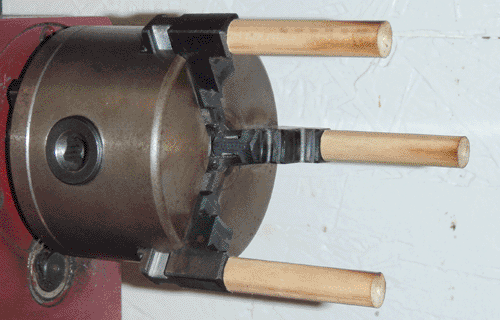
Bottles are the most common form of recyclable soda-lime glass. However, they present a challenge in that the bottom is rounded and therefore difficult to hold in a chuck, and typical chuck jaws are too short to reach the sides. My solution was to make extensions for my 3-jaw chuck's external jaws, which are padded with wood so that glass can be held tightly without risk of cracking.
I started by drilling a 1/8 inch hole in the face of each jaw. Due to the jaws being hardened, I had to anneal them beforehand by heating them to a faint red glow with the previously-described super torch, then wrapping them in kaowool and letting them sit overnight. At this point they were soft enough to drill. I debated whether or not to re-harden them, and decided to leave them (relatively) soft for now. I didn't want to accidentally warp them or make them brittle, and judging by the difficulty I had drilling, they were still fairly hard. I then made the extensions, which are simply 2-inch lengths of 7/16 inch wooden dowel, mounted on centered 1/8 inch steel pins which fit into the holes in the jaws. They resist heat surprisingly well, and after two days of use they are only mildly scorched. Besides that, they are simple enough to make as to be disposable. For oddly-shaped workpieces, custom jaws could even be turned from larger dowel rod.
I tested the jaws on a partially-melted bottle that would have otherwise been unholdable. The jaws were rigid enough to score the bottle with a diamond file, which can be seen in the picture below.
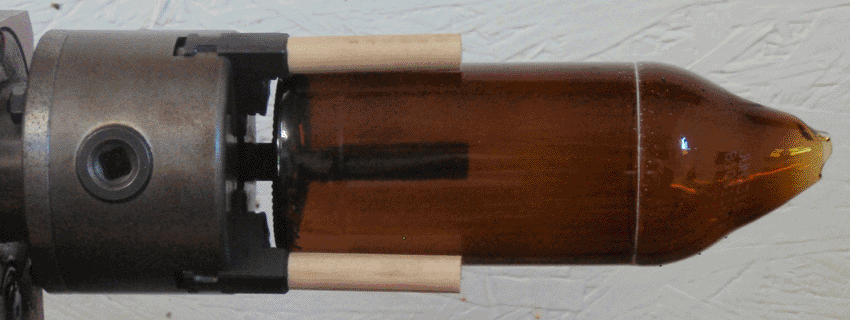
After parting off the end with a hot wire, I re-mounted the bottle on the lathe and flame polished the edge with a combination of the super torch and my MAP gas torch. This was barely enough heat however, so I will most likely have to upgrade to an oxy-propane setup in the future. I did this for three bottles, and the results can be seen below on the right.
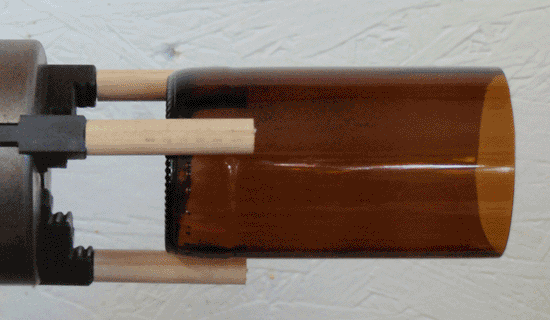
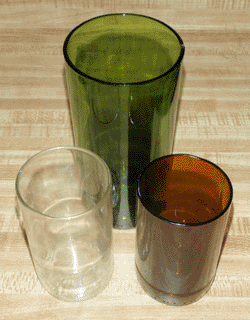
Overall this project was a success, but if I were building glassworking jaws from scratch and had more room to drill, I would probably use 1/4 inch pins instead of 1/8 inch. The current pins flex slightly when clamped tightly.